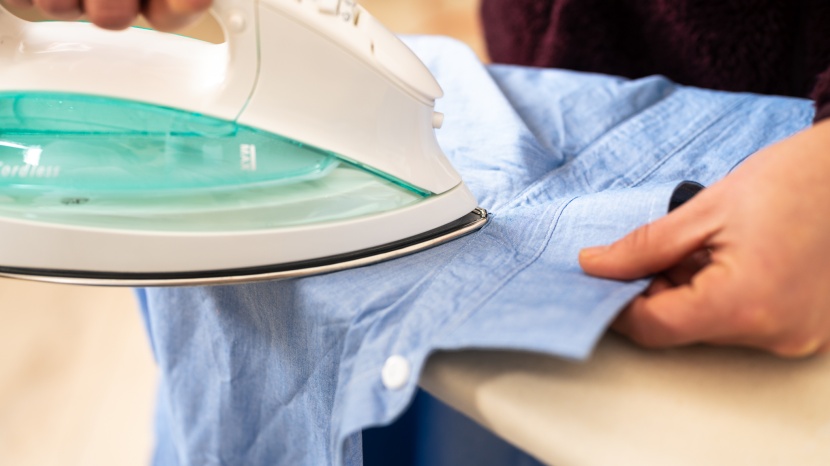Upon first impression, all of the top clothing irons may look like a fairly homogenous field of products producing similar results. While this may be true to some degree, we designed our testing methodology to focus on specific aspects of ironing performance that help differentiate between models. We split our tests into five metrics: ironing performance, steam output, heating ability, detailing performance, and ease of use.
Ironing Performance
We evaluated ironing performance across many types of fabrics, including cotton, linen, satin, silk, and polyester. To grade wrinkle reduction, we would lay out a garment, take two different irons, and iron two swatches side by side. This allowed us to directly compare the wrinkle reduction performance of each iron on the same garment. We repeated this process ad nauseam, constantly changing the irons and types of garments. During this test, we ironed naturally, moving at a reasonable speed and using the “burst of steam” buttons when it felt like we needed a little extra power. This left us with a pile of data that allowed us to rank our lineup regarding wrinkle-fighting power. The garments were either left crumpled in a hamper overnight to induce wrinkles or, to test stubborn wrinkles, we would iron creases into clothing and then try to iron them back out.
Steam Output
To measure steam output, we first filled each iron's water tank to the brim and weighed them. We then dialed in the highest temperature and steam settings, generally the cotton setting, and let them preheat for three minutes to ensure they got up to temperature. We ironed with each for exactly two minutes, shut them off, and weighed them again. The difference in weight told us how many grams of water were converted into steam and pushed into the garment in those two minutes, and dividing by two gave us grams per minute. We did not use any steam burst functions during this test.
Heating
To test the heating element, we put each iron on its highest temperature setting and let it preheat for five minutes. We then measured the temperature of each in various places on the soleplate, using a very accurate thermocouple — one that was certified by the National Institute of Standards and Technology. We chose this methodology because the thermocouple is very precise, and this paints an obvious picture of which models get the hottest and if they heat uniformly (or not) across the entire soleplate.
Detailing
Testing for this metric was multi-faceted. We ironed dress shirts with complicated collars and numerous buttonholes, and we evaluated how easily the iron could glide over the fabric. We considered the shape of the nose and how well it could get into small crevices and around narrow openings. We noted how easy it was to flatten out challenging portions like armpits and shoulders. And we evaluated each iron's glide, including how heavy it felt and how easily it could shift directions to get around the smallest details of a garment.
Ease of Use
Our testers spent a lot of time with each iron, changing the settings, waiting for them to heat up, refilling the water tanks, and, of course, ironing. They considered things like ease of getting water in the tank, whether or not there was an indicator to signal when the iron was up to temperature, the general ergonomic feel, and whether or not the cord tended to get in the way. We've spent a lot of time thinking about irons, so you can trust our opinion on which ones are the easiest to use.
Why We Didn't Score Safety
Steam irons are a potential fire hazard, but all the irons that we tested have fairly standardized safety features to mitigate this danger. This includes a 30-second auto-shutoff timer if an iron is left stationary when lying flat or on its side and, depending on the model, an 8-30 minute auto-off timer when the iron is left standing on its heel. We tested these features on all the irons we reviewed to make sure they functioned as advertised, and all the irons in this review worked perfectly in that regard.


